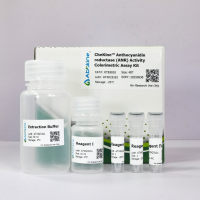Intracellular free Ca2+ is a key second messenger in virtually all cells. In unstimulated platelets and megakaryocytes, [Ca2+ ]i is approx 100 nM and can be rapidly elevated by a variety of different agonists that activate phospholipase-C via heterotrimeric G proteins or receptor kinases (1 –4 ). Phospholipase-C (PLC) generates cytosolic IP3 , which releases Ca2+ by opening cation channels on the intracellular stores. Agonists also evoke Ca2+ influx across the plasma membrane, although the exact nature of these pathways and their mechanism of activation and contribution under physiological conditions remain poorly understood and, in fact, highly controversial. Release of Ca2+ from the stores activates a Ca2+ influx pathway in both the platelet and megakaryocyte (5 –7 ); electrophysiological measurements have shown that ICRAC (calcium-release activated calcium current), one of the main candidates for the current underlying store-dependent Ca2+ influx, is present in the precursor cell (3 ,8 ). Non-store-dependent Ca2+ influx also seems to exist in the platelet (9 ) and TRPC6, a nonselective cation channel known to be activated by the PLC product diacylglycerol (DAG), has recently been detected in platelets and megakaryocytic cell lines (10 ). Finally, platelets possess at least one type of receptor-operated Ca2+ -permeable channel, the ATP-gated P2X1 receptor, which allows rapid Ca2+ entry independently of store release (11 ,12 ).






